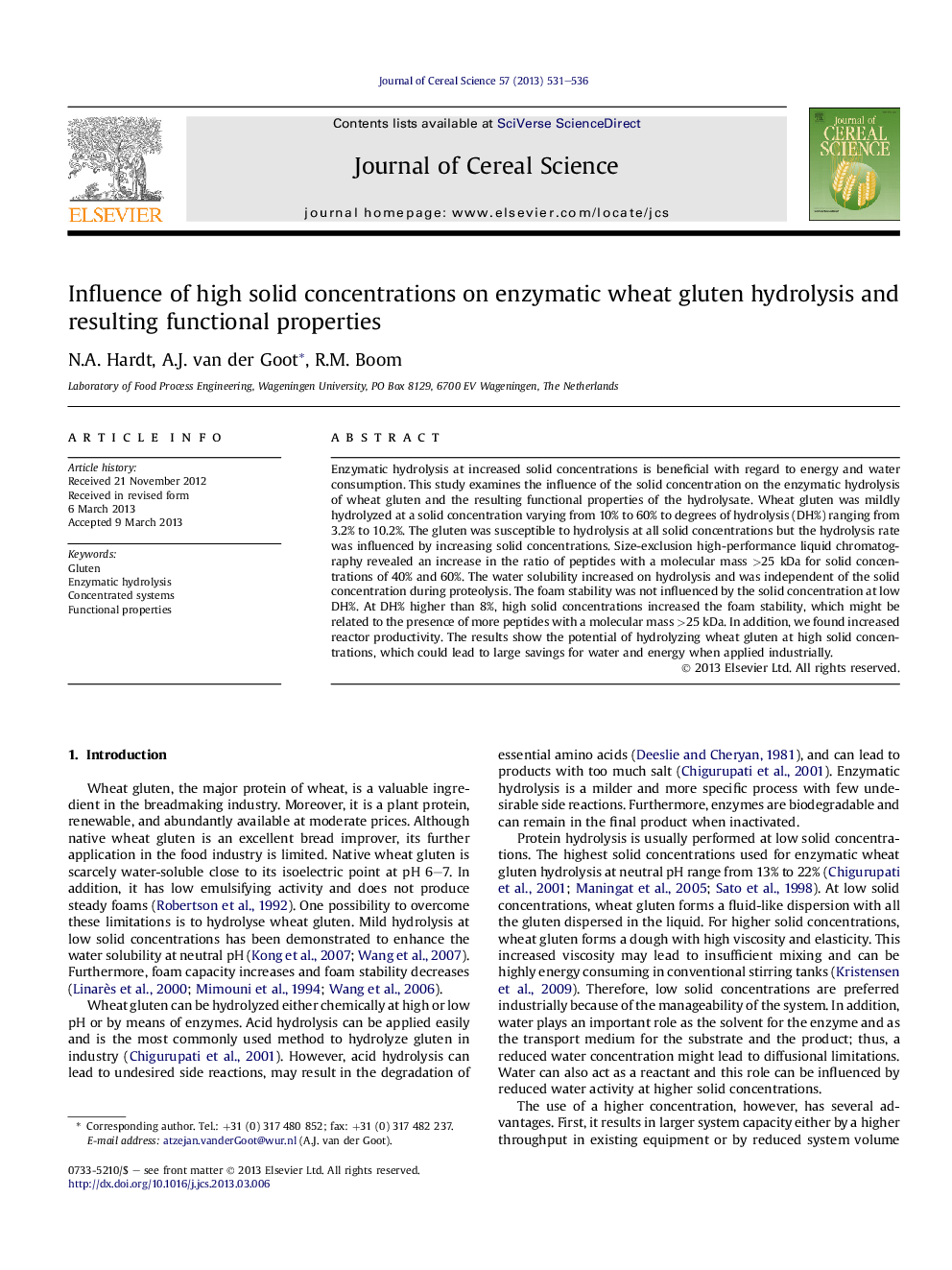| Article ID | Journal | Published Year | Pages | File Type |
|---|---|---|---|---|
| 6377959 | Journal of Cereal Science | 2013 | 6 Pages |
Abstract
Enzymatic hydrolysis at increased solid concentrations is beneficial with regard to energy and water consumption. This study examines the influence of the solid concentration on the enzymatic hydrolysis of wheat gluten and the resulting functional properties of the hydrolysate. Wheat gluten was mildly hydrolyzed at a solid concentration varying from 10% to 60% to degrees of hydrolysis (DH%) ranging from 3.2% to 10.2%. The gluten was susceptible to hydrolysis at all solid concentrations but the hydrolysis rate was influenced by increasing solid concentrations. Size-exclusion high-performance liquid chromatography revealed an increase in the ratio of peptides with a molecular mass >25Â kDa for solid concentrations of 40% and 60%. The water solubility increased on hydrolysis and was independent of the solid concentration during proteolysis. The foam stability was not influenced by the solid concentration at low DH%. At DH% higher than 8%, high solid concentrations increased the foam stability, which might be related to the presence of more peptides with a molecular mass >25Â kDa. In addition, we found increased reactor productivity. The results show the potential of hydrolyzing wheat gluten at high solid concentrations, which could lead to large savings for water and energy when applied industrially.
Related Topics
Life Sciences
Agricultural and Biological Sciences
Agronomy and Crop Science
Authors
N.A. Hardt, A.J. van der Goot, R.M. Boom,
